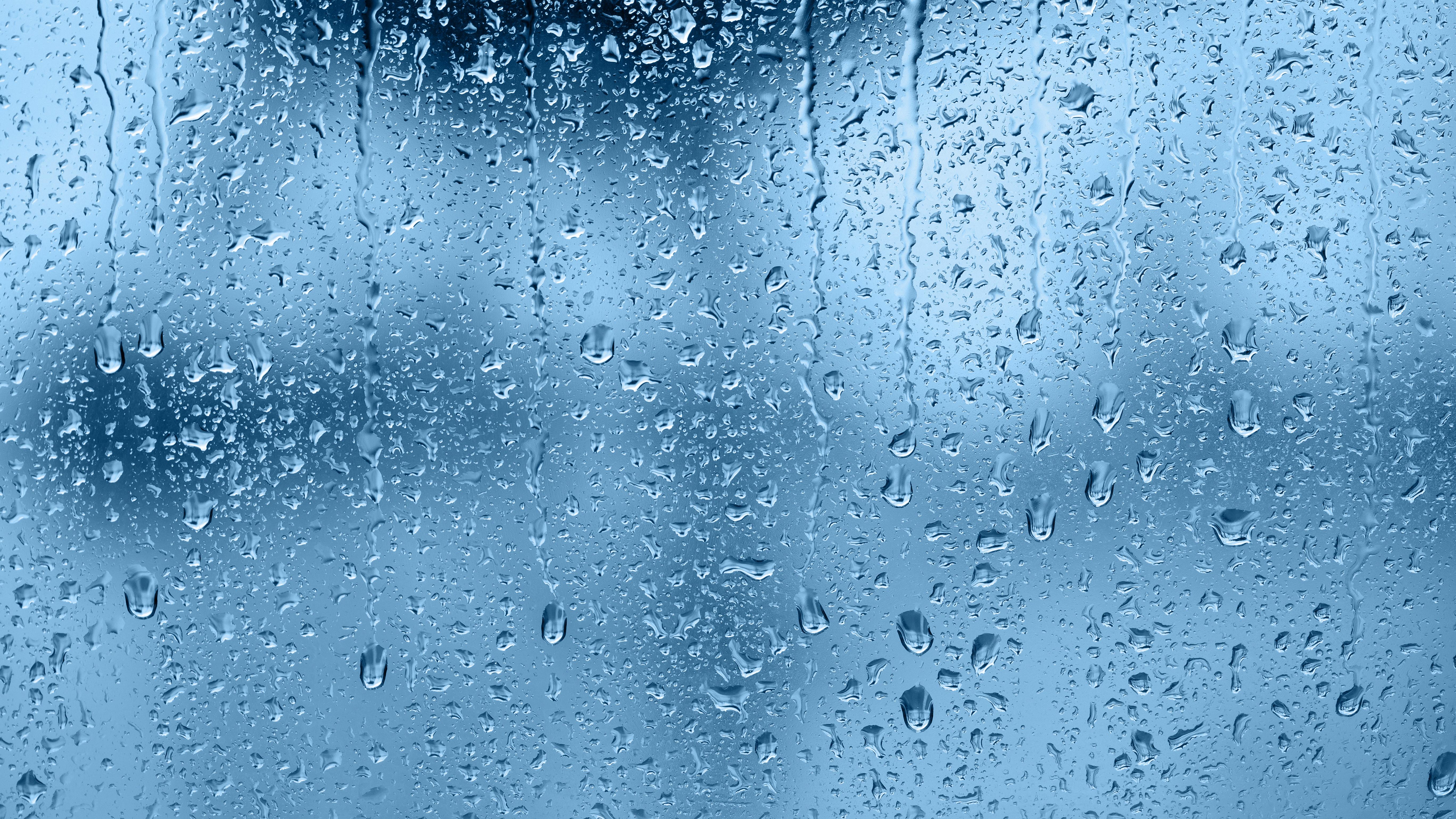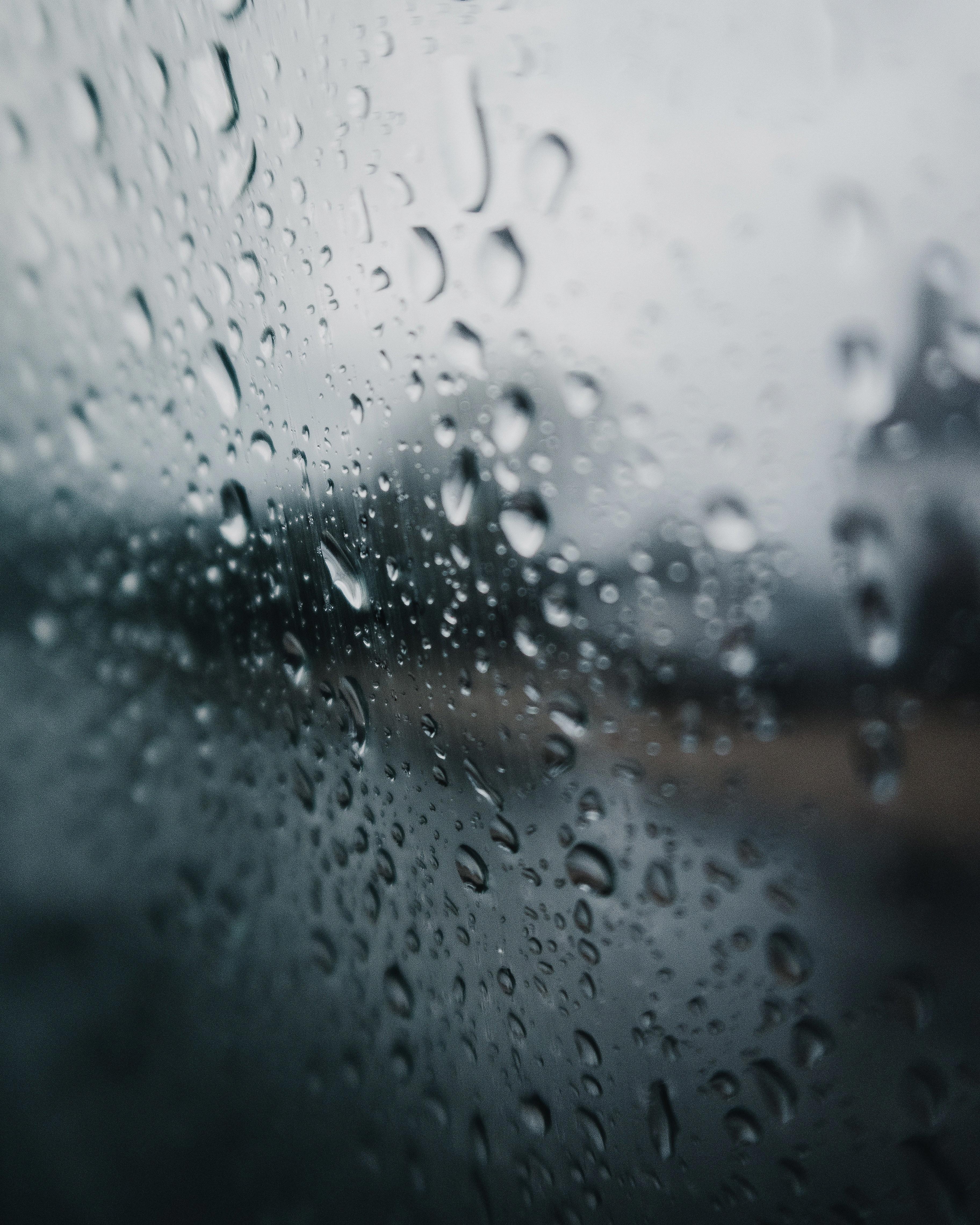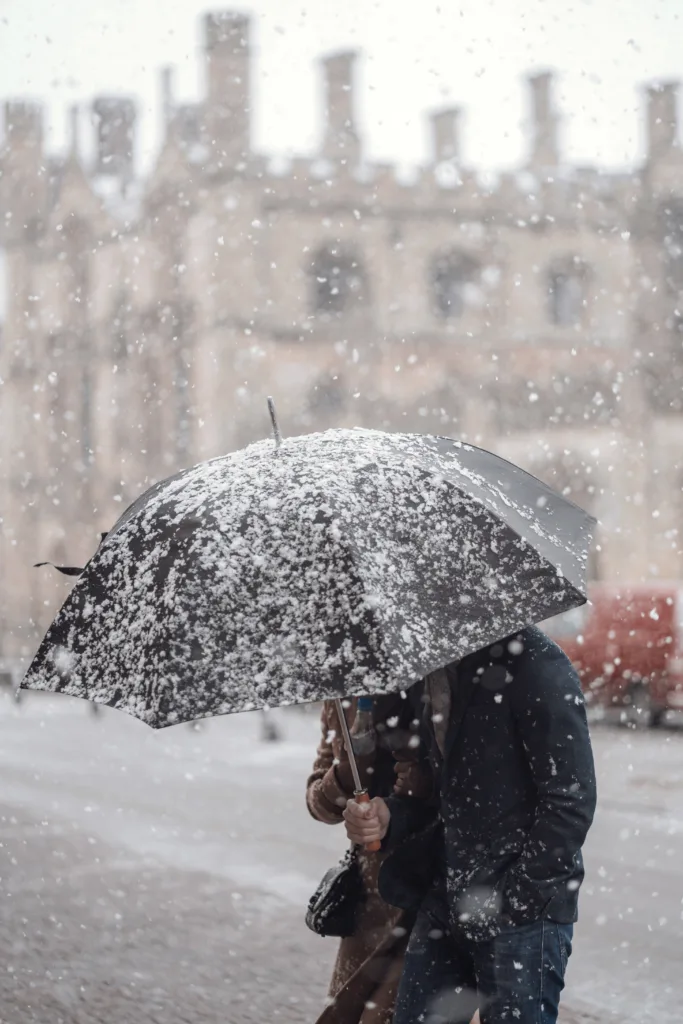Welcome to our blog post about the age-old question: Does rain melt snow? The short answer is yes, but let’s delve deeper into the science behind it.
Firstly, it’s important to understand that snow is not just a solid block of ice. It contains many air pockets, which can make it very porous. When rain falls on these snow piles, it can get into these air pockets, allowing heat to penetrate further into the snow, hence enhancing melting.
But rain is not the only factor that affects the snow melting process. Other meteorological variables like wind and humidity also play a role. A moderate rainfall for an hour or two is likely to melt snow if it is only an inch or less deep.
But why does snow melt even when the temperature is below freezing? Snow can evaporate or sublimate even when it is very cold, but it won’t melt. Instead, it goes directly from a solid state to a gas without being liquid.
However, snow followed by rain can be a problem for roofs. The rainwater doesn’t pour off the roof; instead, it gets trapped in the snow, increasing its weight dramatically. This can be particularly hazardous if the snow is already heavy due to a deep snowstorm.
In areas like Greenland, where there is a lot of snow and ice, rain can be a significant problem. As temperatures rise, more rain falls, melting the snow and ice. This is becoming more common in Greenland, and it is increasingly falling further north, even during the winter in some areas. As more rain falls, more of Greenland’s ice sheet becomes covered in ice instead of snow.
So, in conclusion, rain can ideed melt snow, and it’s important to be aware of the potential hazards, particularly if you live in an area with heavy snowfall. Keep an eye on the weather, and stay safe!
The Effect of Rain on Snow Melting
Rain can melt snow fast. When rain falls on snow, it can penetrate the snow piles and reach the air pockets inside them. This action allows heat to transfer through the snow piles, which accelerates the melting process. Other meteorological variables, such as wind and humidity, can also affect the snow melting process. However, the rate at which snow melts depends on the intensity and duration of the rainfall, as well as the temperature of the snow and the air. In some cases, heavy rainfall and warm temperatures can cause snow to melt rapidly, leading to flooding and other hazards. Therefore, it is important to monitor weather conditions and take appropriae precautions during times of heavy rain or snowmelt.

Source: fox5sandiego.com
The Length of Time Required for Rain to Melt Snow
The time it takes for rain to melt snow depends on various factors such as the intensity and duration of the rainfall, the depth and density of the snow, and the temperature and humidity of the environment. Typically, an hour or two of moderate rain is enough to melt an inch or less of snow. However, if the snow is denser or deeper, it may take longer for the rain to penetrate and melt it. Similarly, if the rainfall is light or intermittent, it may not have a significant effect on the snow. Moreover, if the temperature is too low, the rain may freeze on contact with the snow, forming a layer of ice instead of melting it. whie there is no definitive answer to how long it takes rain to melt snow, it can be generally said that the process depends on multiple factors that interact in complex ways.
The Effects of Snow Followed by Rain
When it rains after snow, the combination can be problematic for roofs. This is because the rainwater does not immediately run off the roof, as it would during a typical rainstorm. Instead, the water gets trapped in the snow. The weight of the snow combined with the added weight of the trapped water can beome quite heavy, potentially causing damage to the roof. This is especially true for flat roofs or roofs with a low pitch, as the water has nowhere to go and can accumulate quickly. It is important to regularly remove snow from roofs during the winter months to prevent this issue. If rain is in the forecast, it is crucial to remove any snow beforehand to prevent potential damage. when it rains after snow, the trapped water in the snow can increase the weight on a roof, which can lead to damage if not addressed promptly.
The Effect of Rain on Ice Melting
Rain can cause ice to melt. When rain falls, it brings warmth with it, and if the air temperature is above the freezing point, it can melt ice or snow. This is becoming more common in Greenland due to higher temperatures caused by climate change. In some areas, rain is even falling during the winter months, which is unusual. When rain falls on Greenland’s ice sheet, it can cause more of the ice to become covered in water instead of snow, leading to more melting and contributing to rising sea levels. So, wile rain itself doesn’t directly cause ice to melt, it can contribute to the overall melting of ice and snow when combined with warmer temperatures.
The Effects of Rain on Snow Softness
Rain can make snow softer. When snow is exposed to rain, the water droplets will penetrate the snow layer and start to melt it. As a result, the snow will beome wet and slushy, losing its shape and structure. The more it rains, the more water will be absorbed by the snow, making it even softer. Additionally, the temperature of the rain can also affect how quickly the snow melts. Warmer rain will melt the snow faster than colder rain. Thus, when it rains, the snow will become softer and less compact, making it easier to shovel or play in. However, if the rain continues for too long, it may cause flooding and other weather-related issues.

Source: pexels.com
What Substance Melts Snow the Quickest?
When it comes to melting snow, there are several methods you can use to achieve the desired result. However, the fastest way to melt snow is by usng hot water. By spraying hot water on the snow, you can quickly melt it down, making it easier to remove. This method is especially useful if you need to remove snow quickly, such as when clearing a driveway or sidewalk. However, it’s important to note that using hot water is not a long-lasting solution, as the melted snow can quickly turn into ice if not properly removed. Therefore, it’s crucial to cover the area with sand or an ice-melter mixture to prevent the puddle from freezing. when it comes to melting snow quickly, using hot water is the most effective and efficient method available.
The Effects of Weather on Snow Melting
The weather that makes snow melt is any temperature above 32°F or 0°C. When the temperature rises above freezing point, the snow begins to melt as the solid ice crystals transition back into liquid water, which is its natural state. Other factors such as sunlight, wind, and humidity can also affect the rate of snow melt. For instance, direct sunlight and warm wind can accelerate the melting process, while high humidity can slow it down. Eventually, as the temperature remains consistently above freezing point, the snow will completely melt away, leaving behind only water.
The Effect of Sunlight on Melting Snow
Sunlight is indeed enough to melt snow. This is because the sun’s visible light and UV rays are absorbed by the snow, causing it to melt. While the sun’s rays may not warm up the air significantly, they are still able to penetrate the snow and provide enough energy to melt it. This process is known as the “albedo effect,” whch refers to the ability of a surface to reflect or absorb solar radiation. In the case of snow, the albedo effect is particularly strong, as snow is highly reflective and can absorb a significant amount of solar radiation. Therefore, even in freezing temperatures, sunlight can still melt snow.
The Melting of Snow
Snow will eventually melt. Snow is a frozen form of water, and when the temperature rises above 32º F, it will begin to melt. This can happen when the sun shines on the snow or when the air temperature warms up. The melted snow turns into runoff, which can flow into rivers, lakes, or the ground. The process of snow melting is a natural part of the water cycle, whre water evaporates from bodies of water, condenses into clouds, and falls back to Earth as precipitation. So, whether it’s a small snowflake or a large snowdrift, eventually, it will all melt.

Source: apnews.com
How Long Does It Take for One Inch of Snow to Melt?
The time it takes for 1 inch of snow to melt depends on varius factors such as temperature, humidity, wind speed, and sunlight exposure. In general, if the temperature is above freezing point (32°F or 0°C), the snow will start to melt. However, the rate of melting will vary depending on the temperature. For instance, if the temperature is around 40°F (4°C), it will take approximately one day for 1 inch of snow to melt. Conversely, if the temperature is around 50°F (10°C), 1 inch of snow can melt between 2 to 4 hours. The presence of sunlight can also accelerate the melting process because the sun’s rays absorb heat and transfer it to the snow. However, if the temperature drops below freezing point, the melting process will slow down or even stop. Hence, the time it takes for 1 inch of snow to melt depends on several factors, with temperature being the most significant determining factor.
How Long Does It Take for Two Inches of Snow to Melt?
The time it takes for 2 inches of snow to melt can vary depending on several factors. If the temperature remains consistently at 50 degrees Fahrenheit for three consecutive days, it can melt 2 to 4 inches of snow. However, if the temperature drops below freezing at night, the melting process will be slower. Additionally, the amount of moisture in the air can accelerate the melting process, while wind can carry away the moisture and preserve the snow pack. Therefore, the exact time it takes for 2 inches of snow to melt cannot be determined without considering these factors.
What Is the Name for Snow Mixed With Rain?
When snow and rain come together, the resulting precipitation is called sleet. Sleet is a mixture of frozen and liquid water that falls from the sky as small ice pellets. It forms when snowflakes fall through a layer of warm air, causing them to partially melt and then refreeze before reaching the ground. Sleet can make roads and sidewalks slippery, so it’s important to be cautious when walking or driving in these conditions. It’s also important to note that sleet is dfferent from freezing rain, which occurs when rain falls through a layer of cold air and freezes on contact with the ground or other surfaces.
Can Snow Melt on a Cloudy Day?
Snow can melt on a cloudy day. Although clouds can block some of the sun’s rays, they do not completely prevent sunlight from reaching the Earth’s surface. In fact, even on a cloudy day, some sunlight, including infrared rays, can penetrate through the clouds and reach the ground. These infrared rays have the ability to warm up the surface, including snow, and cause it to melt. Additionally, if the temperature is aboe freezing, the snow will melt regardless of whether it is cloudy or sunny. Therefore, it is possible for snow to melt on a cloudy day, even if it may take longer than on a sunny day.

The Impact of Rain on Snowmelt
Rain can have a significant impact on the process of snowmelt. When precipitation falls as rain instead of snow, it can quickly melt existing snowpacks and add to the amount of water flowing on the surface. This can cause a sudden and significant increase in the amount of water flowing into streams and rivers, which can lead to flooding and oter hazards.
Additionally, rain can cause snow to melt faster by accelerating the melting process. When rain falls on snow, it can increase the temperature of the snow and cause it to melt more quickly. This can also add to the amount of water flowing on the surface and contribute to flooding.
It is important to note that the amount and timing of rainfall can greatly affect the impact it has on snowmelt. Heavy rainfall during a short period can cause a rapid increase in water flow, while lighter, steadier rainfall may have a more gradual impact.
Rain can have a significant impact on the process of snowmelt and can contribute to flooding and other hazards. It is important to monitor weather conditions and water levels during times of snowmelt and rainfall to ensure safety and mitigate risk.
The Effect of Rain on Ice Salt
Rain can wash away some of the ice salt, but it may not completely remove all of it. The residue left behind by the salt is just as harmful to your car’s exterior as the initial application. When it rains, the temperature is usually warmer, and this can accelerate the damage caused by the salt. The salt can corrode the metal parts of your car, leaving unsightly rust marks and weakening the structural integrity of the vehicle. If you want to protect your car from the harmful effects of ice salt, it’s recommended that you wash your car regularly with a high-pressure hose or take it to a car wash that offers an undercarriage wash. This will remove any salt residue and prevent it from causing futher damage to your car.
Conclusion
Rain can ideed accelerate the melting of snow due to its ability to penetrate the air pockets in snow piles and allow heat to penetrate further. Other meteorological factors such as wind and humidity can also impact the snow melting process. However, snow can also evaporate or sublimate even when it is below freezing temperature. It is important to note that rain or wet snow following a deep snowstorm can cause significant problems for roofs due to the increased weight. Furthermore, in areas with higher temperatures, such as Greenland, rain is becoming more common and can lead to the melting of ice sheets. Therefore, while rain can contribute to the melting of snow, it is important to consider the various factors that can impact the snow melting process.
